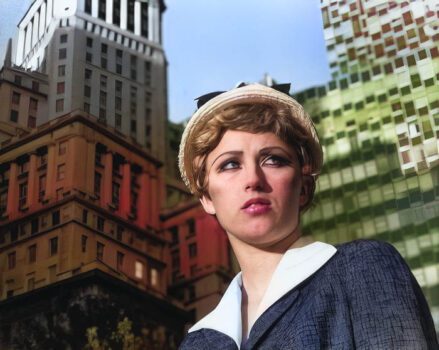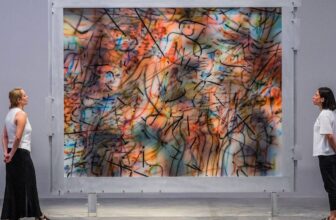What Is Cindy Sherman Known For
In the dim glow of a gallery spotlight, a large photograph hangs , a woman stares at the viewer, poised and composed, but her eyes betray a haunting melancholy. The image feels familiar, like a memory that never was. This is not a portrait of someone else. It’s Cindy Sherman , or rather, it’s another character brought to life by Sherman’s transformative lens. But in the paradox that defines her life’s work, Cindy Sherman is both everyone and no one at once.
Born in 1954 in Glen Ridge, New Jersey, and raised in Long Island, Cindy Sherman is one of the most iconic and influential contemporary artists of the 20th and 21st centuries. Though she began her journey studying painting at the State University of New York at Buffalo, she found herself disenchanted with the medium’s limitations. A camera, instead, would become her ultimate tool , and her mirror.
Sherman’s art exists at the crossroads of performance, photography, makeup, costume design, and psychological drama. She is the director, actor, stylist, and photographer in every piece she creates. But her true medium? Identity. With each click of the shutter, she dissects society’s assumptions about femininity, media representation, aging, beauty, horror, and even the self.
What Is Cindy Sherman Known For?
Cindy Sherman is best known for her groundbreaking “Untitled Film Stills” series, created between 1977 and 1980. This collection of 69 black-and-white photographs mimicked scenes from 1950s and 60s B-movies and European art cinema. Sherman played every character , from ingénues and bombshells to housewives and office girls. Yet none were based on actual films. They were entirely fictional, constructed from the collective visual memory of film culture.
Through this series and her continued work, Sherman masterfully critiques gender roles, media archetypes, and the visual language that shapes our understanding of femininity. Her genius lies in the ambiguity. These photographs aren’t self-portraits in the traditional sense, nor are they caricatures. They’re fiction as truth , a mirror reflecting not her personal identity, but the cultural costumes we all wear.
Over the decades, her work evolved to include grotesque fashion, aging socialites, clowns, history portraits, and Instagram selfies , all still featuring Sherman, hidden behind elaborate masks, wigs, prosthetics, and makeup. But at its core, her work remains consistent: a confrontation of how we see and how we are seen.
How Does Cindy Sherman Make Her Artwork?
Cindy Sherman’s artistic process is meticulous, solitary, and entirely self-directed. She works alone, often in her studio or at home. Each photograph begins with an idea, a character, or a visual motif that inspires her , whether it be an old photograph, a movie still, a costume, or a mood.
Here’s a breakdown of her process:
Conceptualization: Sherman thinks about the identity she wants to explore. Sometimes it’s a direct response to societal themes , aging, vanity, horror, beauty , and sometimes it emerges organically from playing with materials.
Costume & Makeup: She assembles elaborate costumes, wigs, props, and theatrical makeup. Her transformations are astonishingly complete, often rendering her unrecognizable.
Set & Lighting: She constructs scenes, often minimal or highly staged, and manipulates lighting to evoke particular emotional tones.
Photography: Sherman uses a camera with a timer or remote control. Early in her career, she used film; now she uses digital cameras, which allow her to manipulate the images more extensively in post-production.
Editing: She sometimes digitally alters her work , retouching, compositing, or enhancing details to heighten the surreal or grotesque effect.
Printing: Her works are printed in large scale, often upwards of six feet tall, confronting viewers with life-sized confrontations of the personas she adopts.
Through this solitary, performative process, Sherman blurs the line between creator and subject, making each image both deeply personal and widely universal.
What Art Style Is Cindy Sherman Associated With?
Cindy Sherman is often categorized within Postmodernism, particularly in the realms of photography and feminist art. Her work draws heavily on the following themes:
Appropriation: Reusing and recontextualizing familiar cultural imagery.
Simulacra: Her characters feel real, but they are simulations , echoes of media representations.
Feminist Critique: She examines and subverts traditional notions of femininity and objectification.
Identity Politics: Her work raises questions about gender, age, class, and identity.
The Grotesque and The Uncanny: Many of her later works feature distorted bodies, exaggerated features, or horror-like makeup, invoking a visceral emotional response.
Though her medium is photography, Sherman’s oeuvre has a performative and painterly quality that aligns with conceptual art, feminist performance, and even surrealism. She is a one-woman art movement.
How Many Artworks Does Cindy Sherman Have?
Cindy Sherman’s career spans over four decades, and she has produced hundreds of unique works, many of which belong to serialized collections. Notable series include:
Untitled Film Stills (1977–1980): 69 photographs
Centerfolds (1981): 12 images, originally commissioned for Artforum
Disasters and Fairy Tales (1985–1989): Grotesque, horror-inspired works
History Portraits (1988–1990): References to classical paintings with absurd distortions
Clowns (2003–2004): Colorful, eerie portraits of Sherman as various clown personas
Society Portraits (2008): Wealthy, aging women posed in faux-opulence
Instagram-Inspired Selfies (2017 onward): Reflecting the current culture of digital self-image
Estimates place her total artworks at well over 600, with new work continuously added to her repertoire.
How Famous Is Cindy Sherman?
To put it simply: Cindy Sherman is a giant in contemporary art. Her influence reaches far beyond photography. She is studied in art schools globally, featured in major museum collections, and has inspired artists from visual arts to fashion and film.
Her accolades include:
MacArthur “Genius” Grant (1995)
Venice Biennale (multiple participations)
Retrospectives at the Museum of Modern Art (MoMA), The Whitney, and Tate Modern
Honorary Doctorates and lectureships at leading institutions
Celebrities, designers, and thinkers alike revere her. Designers like Balenciaga and Marc Jacobs have cited her influence; Lady Gaga and Madonna have referenced her work visually. In 2019, she even embraced Instagram, sharing new creations and offering a peek behind the curtain of her decades-long artistic transformation.
Sherman’s fame is also reflected in the art market. Her works fetch staggering sums at auction, and she is one of the most collected living artists today.
How Much Does Cindy Sherman’s Art Cost?
Cindy Sherman’s works command high seven-figure prices at auction, reflecting her status and historical importance.
In 2011, her Untitled #96 (from the Centerfolds series) sold at Christie’s for $3.89 million, making it one of the most expensive photographs ever sold at the time.
Most of her prints now sell for anywhere between $500,000 to over $2 million, depending on rarity, provenance, and size.
Her more recent works , especially those digitally manipulated or one-of-a-kind , are also reaching the million-dollar mark at major galleries and private sales.
The high cost isn’t just for her signature style , it reflects Sherman’s unique contribution to the canon of art. She didn’t just challenge photography; she redefined portraiture and identity for a generation.
What Materials Does Cindy Sherman Use?
Sherman’s materials go far beyond camera and lens. Her studio resembles a cross between a film set, a makeup counter, and a theatrical costume department.
Her toolkit includes:
Cameras: Originally 35mm film, now high-resolution digital cameras
Tripods & Timers: For self-portraits
Makeup and Prosthetics: Including fake noses, teeth, scars, and latex skin
Wigs & Costumes: Collected from thrift stores, costume shops, and designed by Sherman herself
Props & Backdrops: Fabric, wallpaper, digital backgrounds, or studio sets
Lighting Equipment: For dramatic or cinematic effects
Digital Software: Photoshop and other editing tools for post-production manipulation
Sherman treats every component of her image , from her nose shape to the lighting color , as essential to constructing character and narrative. It’s a total immersion approach to artistic creation.
Why Cindy Sherman Matters More Than Ever
In today’s era of selfies, filters, and social media personas, Cindy Sherman’s work feels more urgent and prophetic than ever. She was exploring identity construction long before Instagram made it mainstream. In fact, her art poses the same questions we ask today:
Who are we trying to be?
What mask do we wear in public?
How much of what we present is authentic?
Sherman doesn’t offer answers. Instead, she shows us just how easy it is to slip into another identity , and how fragile, even dangerous, those constructions can be.
Her recent Instagram portraits (selfies taken with apps that distort facial features) mimic the surreal beauty standards of our time, transforming her face into unsettling yet familiar exaggerations. It’s both hilarious and horrifying , classic Sherman.
Cindy Sherman shattered the boundaries of photography, performance, and feminist art. Without painting a single canvas in the traditional sense, she changed how we view portraiture. In her characters, we see ourselves , multiplied, fractured, and reflected back.
Artists like Gillian Wearing, Yasumasa Morimura, and Nikki S. Lee continue to build upon her legacy, as do countless emerging voices inspired by her fearlessness and ingenuity.
Yet perhaps the greatest measure of her influence is this: every time we snap a selfie, curate a persona online, or wonder about the masks we wear, we’re treading the same territory Cindy Sherman first illuminated decades ago.
In Cindy Sherman’s world, there are no mirrors , only lenses. And through those lenses, we see not her, but the very essence of what it means to be human in disguise.




